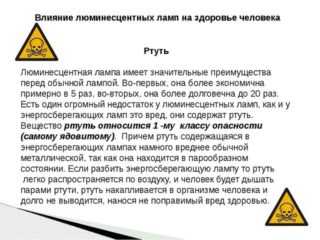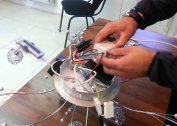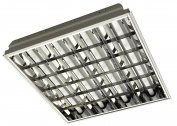The increase in electricity tariffs and the short life of incandescent lamps have led to the popularization of economical light sources with a longer service life. Manufacturers offer two options for technological solutions - LED devices and fluorescent products. To determine which lamps are best for the home - LED or energy-saving - a comparative analysis should be carried out.
Design features
 For household lighting, LED lamps, ribbons and LED lamps with a standard socket under the cartridge are used. Luminescent sources are divided into linear tubes installed in luminaires with electronic ballasts or electromagnetic ballasts, as well as compact energy-saving lamps with built-in ballasts.
For household lighting, LED lamps, ribbons and LED lamps with a standard socket under the cartridge are used. Luminescent sources are divided into linear tubes installed in luminaires with electronic ballasts or electromagnetic ballasts, as well as compact energy-saving lamps with built-in ballasts.
For an objective comparison, design features and characteristics of LED and compact fluorescent lamps with an E27 base under a standard cartridge will be considered. The LED lamp consists of an LED emitter, a built-in driver, a radiator, a housing and a base. LEDs are covered with a matte or transparent plastic flask, there are also open designs.
A compact fluorescent lamp contains a twisted gas-filled tube, an electronic ballast, a housing and a base. The sealed glass flask is filled with inert gas and mercury vapor, and the inner surface of the tube is coated with a fluorescent composition.
What is the difference between LED lamps and energy-saving
 LED and energy-saving devices differ in manufacturing technology, as well as the principles of operation.
LED and energy-saving devices differ in manufacturing technology, as well as the principles of operation.
LED sources produce light by direct conversion from electric current. Semiconductor crystals emit blue light, so they are coated with a phosphor, which forms the yellow spectrum of the light wave. The proportional mixing of the yellow and blue spectra creates gradations of cold, white and warm shades corresponding to the color temperature - 5000K, 4000K and 3000K.
The principle of operation of luminescent sources is to create high-voltage discharges of electric current in the gas medium of the bulb between the electrodes. The gas emits ultraviolet radiation, which acts on the phosphor, creating the effect of a white glow. Correct operation of the device is ensured by electronic ballasts mounted in the device casing.
Manufacturers produce light sources that differ in power, light output, color temperature, service life, ripple factor. For an adequate assessment of the economic benefits and the health effects of fluorescent and LED lamps, factory technical specifications confirmed by operating experience should be compared.
Luminous flux and economy
The luminous flux determines the amount of light emitted by the source. The ratio of luminous flux to power consumption characterizes the efficiency of energy consumption. These parameters are indicated on the product packaging.
An LED lamp with a power of 10 W produces a luminous flux of 800 lm. A fluorescent lamp with such a luminous flux indicator consumes 16 watts of electricity. The saving of electricity consumption of LED-lamps relative to energy-saving exceeds 1.5 times. Modern indicators of the luminous flux of LED sources at a power of 10 W reach 1000 lm, which doubles the efficiency relative to fluorescent devices.
The term "energy-saving lamps" has entrenched in the minds of people for compact fluorescent devices.LED sources are characterized by greater efficiency, so they are reasonably called energy-saving.
Efficiency
The efficiency of the lighting device shows what percentage of electricity is converted into visible light. In a luminescent source, electricity undergoes several stages of transformation: power supply of electronic ballasts, discharge generation, the formation of UV radiation, heating of the gaseous medium, irradiation of the phosphor. Each stage of conversion entails energy loss. The beginning of the operation of such devices is accompanied by a dim glow with idle energy costs for heating the flask, so frequent switching on leads to a decrease in efficiency.
Luminescent devices convert into visible light 20-25% of the consumed electricity. Up to 80% of the energy is spent on heating and radiation in the invisible ranges. Light from a source is scattered in space. The absence of a reflector reduces the efficiency to 15%.
LED lamps produce light from electricity directly, which eliminates the loss of electricity. LED emitters produce a directional stream of light, which also increases efficiency. The efficiency of a LED lamp with a directed light beam reaches 99%, and the scattering structure - 90%.
To increase the efficiency of fluorescent lamps, mirror reflectors are used.
Flicker indicator
Powering the lighting with alternating current leads to flickering of light, invisible to the eye. Medicine has proved that light pulsations with a frequency of 8 to 300 Hz negatively affect the vision and brain of a person.
Luminescent sources with electromagnetic ballasts when connected to one phase produce light with a flicker frequency of 100 Hz. Such lamps are not recommended to equip apartments.
The use of electronic ballasts in compact fluorescent tubes smoothes out the pulsations, but it is necessary to clarify the presence of electronic rather than electromagnetic equipment in the design. The ripple coefficient of light is regulated by document SP52.13330.2011. In residential buildings, an excess of the ripple coefficient of more than 15% is unacceptable.
LED lamps are equipped with switching power supplies or drivers with filters. A pulsed source gives a ripple of up to 10%. Using a driver with smoothing filters reduces flicker to 1%.
When buying LED or energy-saving lamps, specify the ripple factor, type of ballast and type of power source.
Operating temperature
 The surface of the lighting fixtures heats up during operation, which must be taken into account when planning lighting.
The surface of the lighting fixtures heats up during operation, which must be taken into account when planning lighting.
The case of an energy-saving lamp heats up to 75 ° C, and the cap to 50 ° C. Replacing CFLs requires caution, as the loss of tightness of the flask releases mercury vapor into the atmosphere. The operating temperature of the LED lamp housing does not exceed 65 ° C, and the cap - 40 ° C. Indices of operating temperatures CFL and LED are not critical for the use of any types of shades.
Lighting sources function correctly at an acceptable ambient temperature. For CFL, an acceptable range is from +5 to + 35˚C. When operating a fluorescent lamp in cold conditions, the start-up time increases and the service life is reduced.
LED devices function properly at low ambient temperatures, providing heat dissipation from the housing. LED devices are not installed close to heating devices. It is not recommended to cover the elements with hermetic caps, which complicate the cooling of the device.
Base Type
 Manufacturers produce LED and fluorescent light bulbs for the home with threaded and pin sockets. Threaded standard plinths are most widely used.
Manufacturers produce LED and fluorescent light bulbs for the home with threaded and pin sockets. Threaded standard plinths are most widely used.
Types of threaded caps:
- E27 - a standard socle with a diameter of 27 mm for a household cartridge;
- E14 - base with a reduced diameter of 14 mm;
- E40 - an option with an increased diameter of 40 mm for high power lamps.
Pin types of caps are marked with an index G with a number indicating the distance between the pins.
Before purchasing a lamp with a non-common type of base, check the correspondence of the marking for a given cartridge.
Comparison of shapes and sizes
Luminescent light sources are produced in the form of straight, circular, compactly rolled tubes. Sizes vary over a wide range, but production technology does not allow the production of small point sources. Tubes in CFLs are spiral or horseshoe-shaped.
LED sources are produced in the form of flat panels, long, three-dimensional lamps, strip lights, spotlights, lamps of various shapes and sizes. Small LED-JCDR recessed bulbs with GU5.3 pin socket are popular. Point sources are built into suspended ceilings.
LED devices are characterized by small dimensions and weight. The LED lamp with a standard E27 base has the shape and dimensions of an incandescent lamp. CFL with a similar luminous flux has a large weight and dimensions.
Life time
The life of a lighting element is measured by the number of hours of uptime without loss of technical characteristics. The manufacturer of fluorescent lamps tests this parameter at 5-6 starts per day. The declared CFL resource is from 10 to 15 thousand hours
Multiple inclusions reduce the service life to 5 thousand hours Wear of the electrodes and phosphor leads to a decrease in the intensity of the glow, which is also a sign of loss of operational properties.
The frequency of switching cycles does not affect the life of the LED devices. The operational resource reaches 60 thousand hours The LED-lamps of the mains voltage contain smoothing devices in the power circuit for smooth switching on, protection against voltage drops, overheating. This ensures that the operating period of the LED device matches the declared service life.
It is not recommended to install fluorescent lamps in rooms with a switching frequency of more than 15 times a day, as well as equip them with motion sensors. Such operation leads to premature failure of the device.
Effects on the human body
 Luminescent tubes contain mercury vapors, which, when lost, leak into the air, which is dangerous for human health. The operation, storage and disposal of such devices require special attention, because a negligent attitude leads to the ingress of mercury compounds into the human environment, soil, water. A massive violation of the rules for the disposal of mercury elements poses a threat to large-scale environmental pollution.
Luminescent tubes contain mercury vapors, which, when lost, leak into the air, which is dangerous for human health. The operation, storage and disposal of such devices require special attention, because a negligent attitude leads to the ingress of mercury compounds into the human environment, soil, water. A massive violation of the rules for the disposal of mercury elements poses a threat to large-scale environmental pollution.
Luminescent sources work by converting ultraviolet radiation into visible light by a phosphor. The fluorescent coating and glass pass a fraction of the ultraviolet light to the outside, and the burning out of the phosphor leads to an increase in the flux of UV radiation, which has a harmful effect on the skin. A person does not see and does not feel the UV radiation, therefore, does not suspect the cause of the disease.
LED manufacturing technology eliminates the ultraviolet spectrum from LED lamps during operation. Infrared radiation is present, but does not exceed 15%, which is safe for humans. The absence of harmful compounds in the composition of LED elements confirms the environmental friendliness of the devices.
With prolonged use of fluorescent lamps, the fluorescent coating burns out, the intensity of ultraviolet radiation increases, which negatively affects health.
The advantages of LEDs in comparison with fluorescent counterparts
 A comparative analysis of the characteristics of energy-saving light sources shows that the operational parameters of LED lamps exceed the performance of luminescent analogues.
A comparative analysis of the characteristics of energy-saving light sources shows that the operational parameters of LED lamps exceed the performance of luminescent analogues.
LED light sources have the following advantages:
- Environmental cleanliness, the absence of harmful, hazardous substances in the design.
- Lack of harmful radiation during the operation of the device.
- High efficiency - electricity is converted into visible light completely.
- Obtaining light flux by an LED requires less than 1.5 - 2 times the cost of electricity than the corresponding indicator of a fluorescent lamp.
- The service life reaches 60 thousand hours, which is confirmed by tests and operational experience. The use of new technologies has increased the declared resource of modern LED lamps for the home up to 100 thousand hours.
- Instant response and readiness for operation of the LED-device, which does not require time-consuming heating.
- The operation of LED elements does not cause overheating of the housing, which makes it possible to equip the lamps with fusible shades, sconces.
- The directivity of the light flux at an angle of 5˚ to 180˚ prevents the scattering of rays, which does not require the use of additional reflectors.
- The presence of models with adjustable brightness, low voltage consumption from DC 12 V, 24 V.
- The choice of modifications with three gradations of color temperatures corresponding to shades of cold, white and warm light.
An extensive list of benefits confirms the status of LED sources as the most economical home lighting lamps. Safety for the environment and human health emphasizes the validity of the choice in favor of LED devices.


